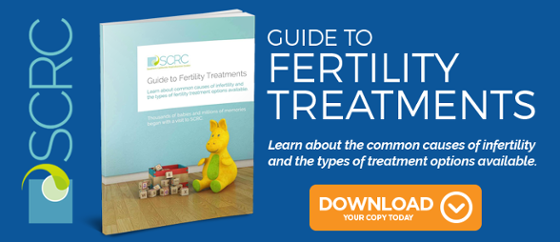
The IVF experience is demanding in many ways, and one topic that comes up more often than you think is how to get through the many injections of fertility medication required during the ovarian stimulation phase.
Some patients feel embarrassed to admit that they have some fear and trepidation around this issue. You might feel as though the temporary discomfort of injections should pale in comparison to the possibility of finally getting pregnant, but don’t discount your own experience. Many women have an actual phobia of needles, which can make this process especially challenging.
Even if you’re not very afraid of injections, multiple shots a day for weeks can be a grueling schedule for anyone. Knowing what to expect and how to make the whole experience a little easier can really help.
What can I expect from IVF injections?
First of all, not every woman finds the shots painful, so that is something to keep in mind. For most patients, the injections aren’t pleasant, but they are quick and any discomfort is over in a few seconds. There are two kinds of injections that you will probably experience as you go through IVF.
- Subcutaneous injections: This type of shot involves giving yourself medication with a very small needle inserted under the skin. Some of the common fertility medications that use subcutaneous injection are Lupron, Gonal-F, Follistim, and Menopur. The injection sites for subcutaneous shots are usually in the belly or the front of the thigh. If you have ever seen someone with diabetes administering an insulin shot to themselves, you will recognize the type of needle. Most of the medications you will take during IVF are administered this way, usually with an injection pen. The sensation of this type of shot is generally a quick pinching type of sensation. Some medications may give a slight tingling or stinging sensation as they are injected. It is generally pretty easy and straightforward to give yourself a subcutaneous injection.
- Intramuscular injections: An intramuscular injection delivers fertility medication directly into a muscle, using a somewhat longer needle. Progesterone in oil is often given as an intramuscular injection, and the hCG “trigger” shot may be an intramuscular shot as well. The usual injection site for these medications is the top outer quadrant of the buttocks. It is possible to administer these shots yourself, but some people have their partner help. Some patients find the needle used for this type of injection intimidating, but the sensation is generally still on the mild pinch end of the spectrum.
How can I make injectable IVF medications easier?
The most important thing you can do to make your injections quick and easy is to give yourself time and space to get it right. Don’t rush, and paradoxically you’ll find it goes faster. Every woman has a different experience, but there are some tips that patients have found helpful.
- Talk to your nurse: Before your cycle begins, the nurse at your clinic should talk you through everything you need to know about giving yourself injections. This is your time to ask questions and make sure that you feel confident. They may circle injection sites with a marker for you so that you don’t have any doubt. If you are particularly nervous, you might ask the nurse to give you the first injection: many patients find that once they know what to expect, it’s much easier to do it themselves.
- Try to relax: This is obviously easier said than done, but if you tense up your muscles in anticipation of the shot, you can actually make it hurt more. Deep breathing and relaxation exercises right before the injection can make a big difference. Try breathing in deeply right before the injection and breathing out slowly as you depress the plunger.
- Consider heat: For intramuscular injections, applying a heating pad to the injection site for a about 10 minutes can sometimes relax the muscle and make the injection easier.
- Try ice: Many women say that icing the area right before injecting can help numb the skin. You can use an ice cube or keep a coin in the freezer to use as a dry mini ice-pack to numb just the injection site.
- Go numb: Anbesol is an over-the-counter gel intended to numb sore gums. A little dab left on the injection site for a few minutes may do the same for your skin before the shot. Be sure to wipe it away with the alcohol swab before you do the injection. If you are struggling with shots and Anbesol isn’t doing the trick, ask your doctor for a prescription for EMLA cream or Synera patch, which should keep you from feeling the needle going in. You may still have a little burning from the medication itself, depending on which type it is.
- Use pressure: You can try pressing on the skin of the injection site with your thumb strongly for about 60 seconds before the shot (make sure you wipe your thumb with the alcohol cleansing swab first. When you relieve the pressure it may be numb. Repeatedly flicking the injection site with your fingernail until it stings a little bit can also serve the same purpose.
- Experiment with injection sites: You might find that either your stomach or your thigh is more comfortable for subcutaneous injections, or that one side or the other is more comfortable for intramuscular injections. Find what works for you and stick with it. Repeatedly injecting the same small area can become uncomfortable, though, so switch it up a bit from time to time if one area is feeling sore.
- Change positions: For intramuscular injections, your body position can affect how the needle feels as it goes in. Bending over a support such as a bed or counter with your weight on the opposite leg from the injection site can be more comfortable for some people. If a partner is giving you the shot, sometimes lying face down is a good way to relax the muscles during the injection.
- Try different needles: Generally, finer gauge needles are the most comfortable. Remember that the higher the number, the smaller the needle. Small needles such as 25 to 27 gauge are usually ideal. If your needles are this small and you still feel some pain, switching to a different brand might help: a different tip may be more comfortable for you.
- Be quick and direct: One confident motion for an injection is much more comfortable than slow or twisting motions.
- Reward yourself: Have something to look forward to as soon as your injection is over. A slice of delicious cake, an episode or three of your favorite TV binge...whatever makes you feel happy. Anticipating the reward while you administer the injection will help flood your brain with positive associations. This is a time to practice especially good self-care. Of course, the ultimate reward for any woman undergoing IVF is the hope of a healthy baby at the end of the process, but short-term treats can really help a lot along the way.
Injections are a fact of life when it comes to IVF, but they don’t need to be a traumatic experience. Knowledge can go a long way towards easing your fears. Phobias, by definition, aren’t ruled by the rational part of our brains, but gradual exposure has been proven to help even deep-seated phobias, and that’s where education comes in.
When you learn exactly what’s going to happen, why, and how, you may find that you don’t feel quite as daunted by the prospect. The first shot is always the toughest mentally, but most well-prepared patients find that after the first few injections, the whole thing becomes routine.
Share this on social media:





